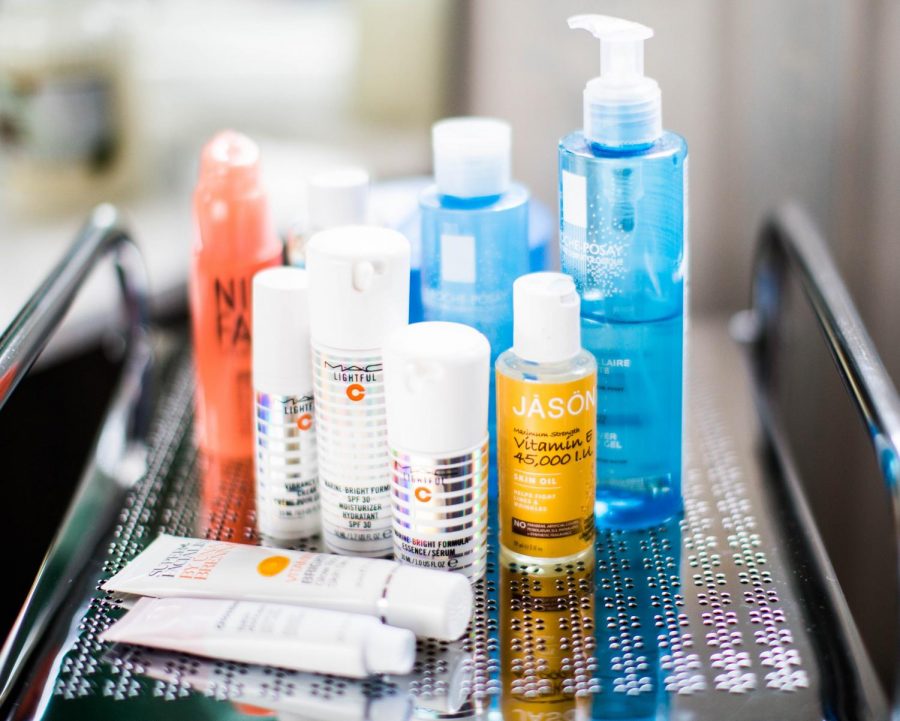How to Revive Dry Winter Skin
February 2, 2018
The cold weather can be hard on people for many reasons, but one big one seems to be dry winter skin. It’s itchy and uncomfortable and all you want is for it to go away. Here are some tips for how to get your skin back on track.
1. Scalp Shampoo: One of the places people experience getting dry very quickly in the winter is actually their scalp. A dry scalp can lead to dandruff and uncomfortable itching. It’s a good idea to purchase a good scalp shampoo. Don’t pick out a 2-in-1 scalp shampoo and conditioner, because scalp shampoos can be drying to your hair. Look for ingredients like tea tree, tar extract, and zinc.
2. Exfoliate: Exfoliating your skin is the best first step because it helps get rid of all of the dead skin that lingering around (gross right?). A lot of people use face scrubs to get the dead skin off their faces, but don’t forget about the rest of your body as well. There are two popular kinds of body scrubs: salt scrubs and sugar scrubs. You can both make them at home or purchase them for a fairly inexpensive price, just make sure they have some type of oil in them to help hydrate as you exfoliate. Use it on your whole body in the shower (if you’re going to shave, do the scrub first), and focus longer on areas that really need the exfoliation.
Another exfoliating option is using a loofah. This is a bit more gentle exfoliant and can be used everyday.
For your face you have a couple options. You can use a granular face scrub, some cleansing brushes have exfoliating brush heads you can use to slough off dead skin, or you can use chemical exfoliants, which are face masks that exfoliate while you use them.
3. Face/Sheet Masks: There are different kinds of face masks for every concern, and they can really be tailored to whatever skin issues you’re experiencing. Peel off ones are good options when you need to get rid of dead skin and clean out your pores. There are also clay masks, which tend to help with more oily skin and acne. If you’re really looking for hydration to help revive your skin, look into a hydrating sheet mask. They might make you look funny for 20 minutes, but it will continue to help your skin even after removing the mask, just rub in the excess after removing the mask.
4. Face Serums: Face serums can really change your skin. Like face masks, they are often tailored to whatever skin concern you make have. For dry skin, look for ingredients like coconut oil, argan oil, and rose oil.
5. Face Spray: Face spray is a good last step in your facial routine. They don’t have to be super expensive to work. Rose and cucumber sprays seem to be the most beneficial, and look for glycerin as an ingredient as well.
6. Hydrating Body Wash: Many body washes can actually dry out your skin. Look at the ingredients before buying it and look for oils or ingredients like shea butter, because these will help hydrate your skin after exfoliating.
7. Body Oil or Petroleum Jelly: After you shower, it’s really important to moisturize your skin. The hot water can be harsh on your skin. A great recommendation is body oil. You can even just buy an oil like Vitamin E or Argan oil, which is more inexpensive than a fancy oil and works just as well. Different oils have different benefits, so doing a little research can help you find one that will most help whatever skin issues you’re facing.
An option that tends to be less expensive is petroleum jelly. This is a much thicker consistency than a body oil would be, so you might have to set a little extra time aside after your shower for this to sink into your skin before putting clothes on. It does really hydrate your skin, however, and can help with concerns like scarring or stretch marks.
8. Lotions & Body Butters: Lotions are a great option for when you have a little less time to sit around waiting for your skin treatments to sink in. They even have spray options now for those of us who are in a big rush. Look for hydrating ingredients when picking out your lotion, like shea butter, vitamin E, argan oil, petroleum, coconut oil, avocado oil, aloe, etc.
9. Body butters are also a good lotion option. They tend to have really similar ingredients to lotion, but are a bit thicker.
Taking good care of your skin can be a bit of a task. Develop a good routine, figure out which days and at what time you’ll use your products, and research what you’re buying before you buy it: especially if you’re going to splurge some money on it. A couple small tips is to put lotion on after washing your hands, using petroleum jelly on your cuticles, choosing a lotion that has a pump so it’s easier to dispense, making it more likely that you’ll use it, and start off small. If you’re overwhelmed by skincare options, just pick one or two items, and as you figure out which ingredients you like; it’ll be easier to pick out other ones you’ll enjoy.
Photography by Charisse Kenion (via unsplash.com)






